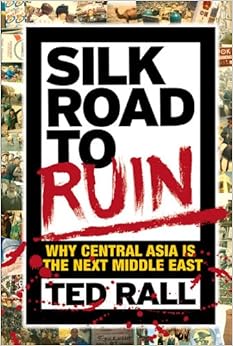
The expanded paperback 2nd edition of Silk Road to Ruin: Why Central Asia is the Next Middle East comes out April 1, 2014. It is now available for pre-order from Amazon. The new edition updates the politics and current events sections to the present. In addition, there is a bonus chapter about my expedition to Lake Sarez in Tajikistan — Central Asia’s “Sword of Damocles,” which could cause an epic flood that could kill millions of people at any time.
I will sell personally signed copies of the book through my website. Please use the contact form if you’d like me to add you to the mailing list and I will get in touch as soon as I have copies to sell — probably around May 1st. (The Amazon copies will ship first, though.)
If you are a book critic or reviewer interested in a review copy, please contact NBM Publishing directly.
If you would like me to speak about Central Asia and the new book at an event, please contact me through the contact form here on the Rallblog.
